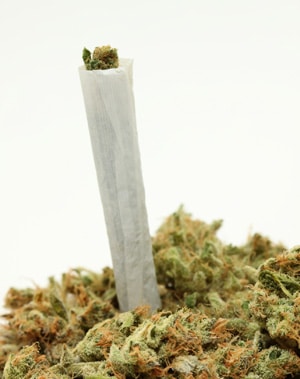
Marijuana is the most widely used illegal drug in the U.S. Although marijuana use had been declining in the early 2000s, the numbers of young people using it began to rise again in 2007 and have continued to increase. Many people believe that the drug is not harmful, but this is not true.
The name marijuana refers to the dried and shredded leaves, stem, flowers and seeds of the hemp plant, Cannabis sativa. This plant can also yield a more concentrated, resinous substance called hashish and a sticky black liquid called hash oil. All of these contain the mind-altering substance known as THC, which is what gives users a high. Marijuana is the most popularly used source of THC. It can be used in a variety of ways. Marijuana can be smoked in a cigarette form or with a pipe or a bong, it can be baked into food like brownies and ingested, or it can be brewed into tea.
Smoking marijuana is the quickest way to allow it into the bloodstream. THC passes quickly through the lungs when inhaled and makes its way to the brain from there. THC is similar to chemicals that occur naturally in the brain and assist with neural communication, but it is much stronger than its natural counterparts. Marijuana overactivates the endocannabinoid system in the brain, which affects concentration, sensory perception, memory, coordination and pleasure perception.
Researchers are learning that young people who use marijuana regularly are seeing a long-lasting negative effect on the brain. This is because the effects of the drug’s interference with memory and learning persist even after the high wears off. When teenagers use marijuana, these effects can last for many years, disrupting the way they learn and process information for the rest of their life.

